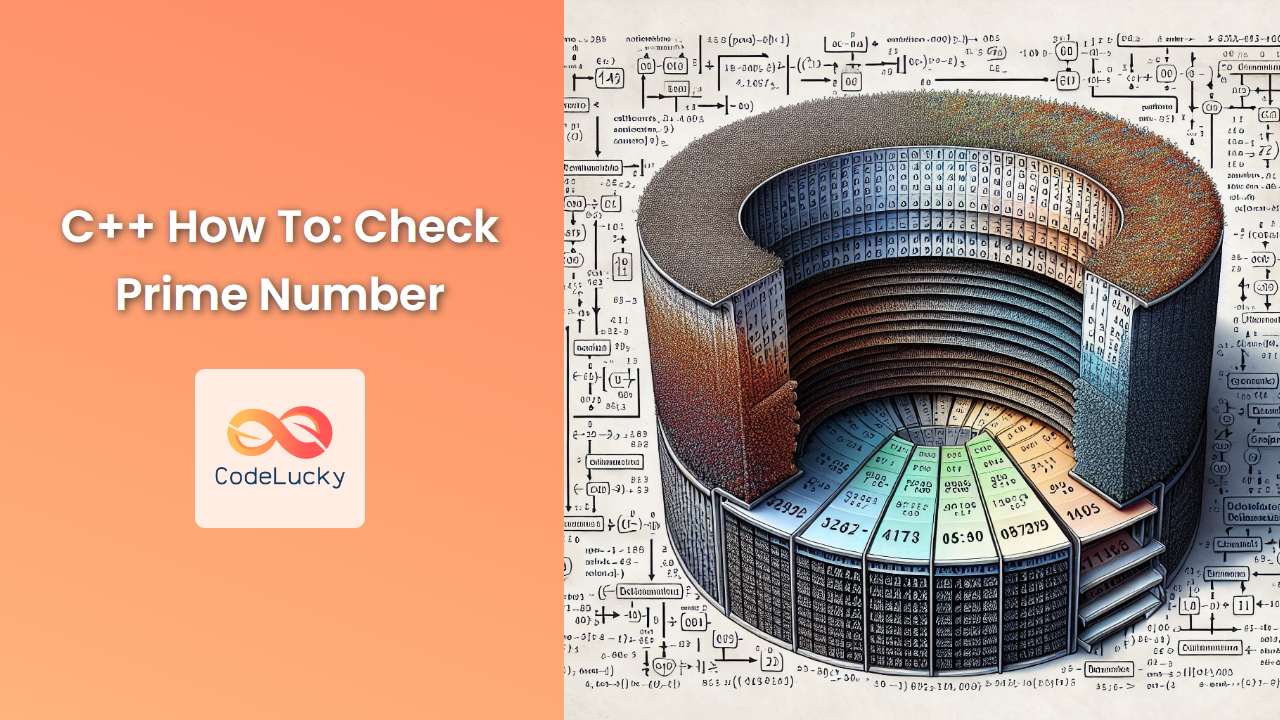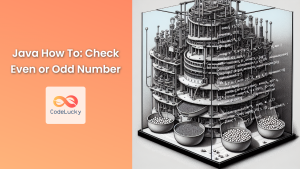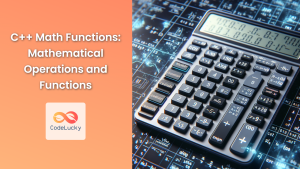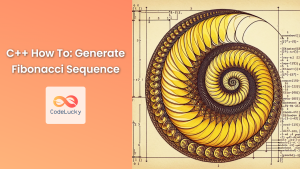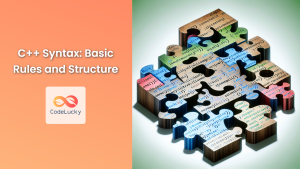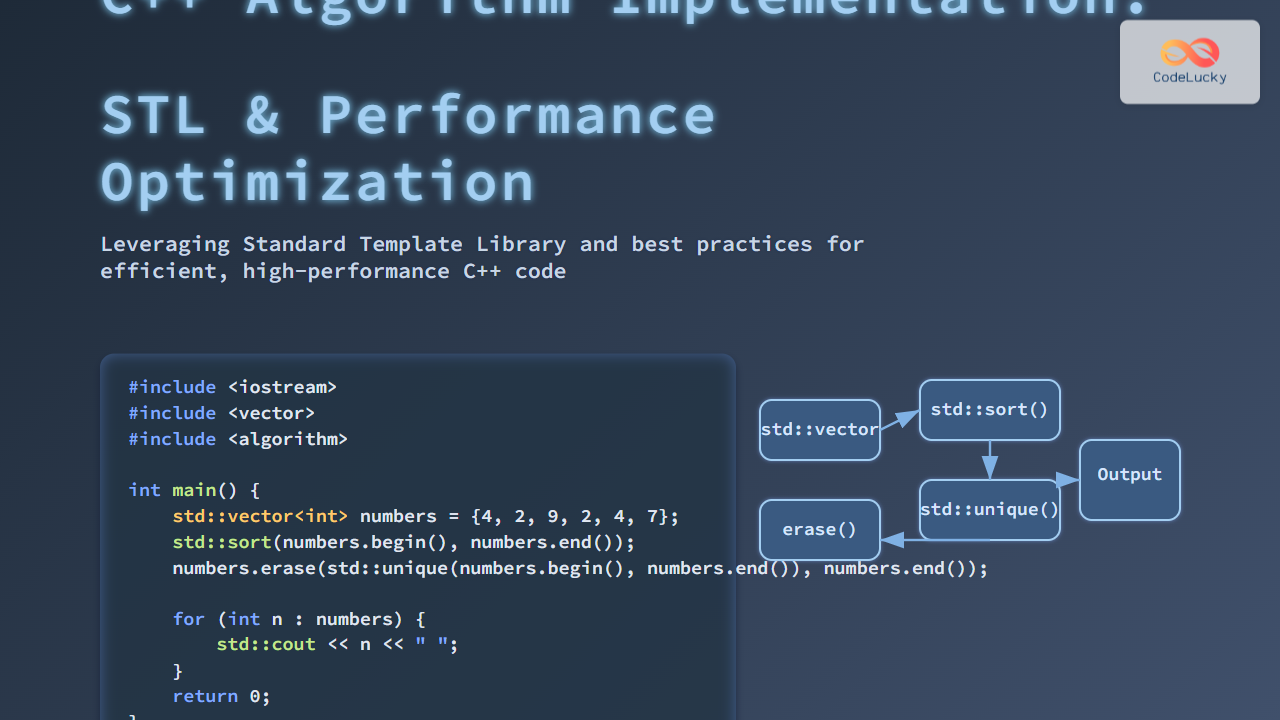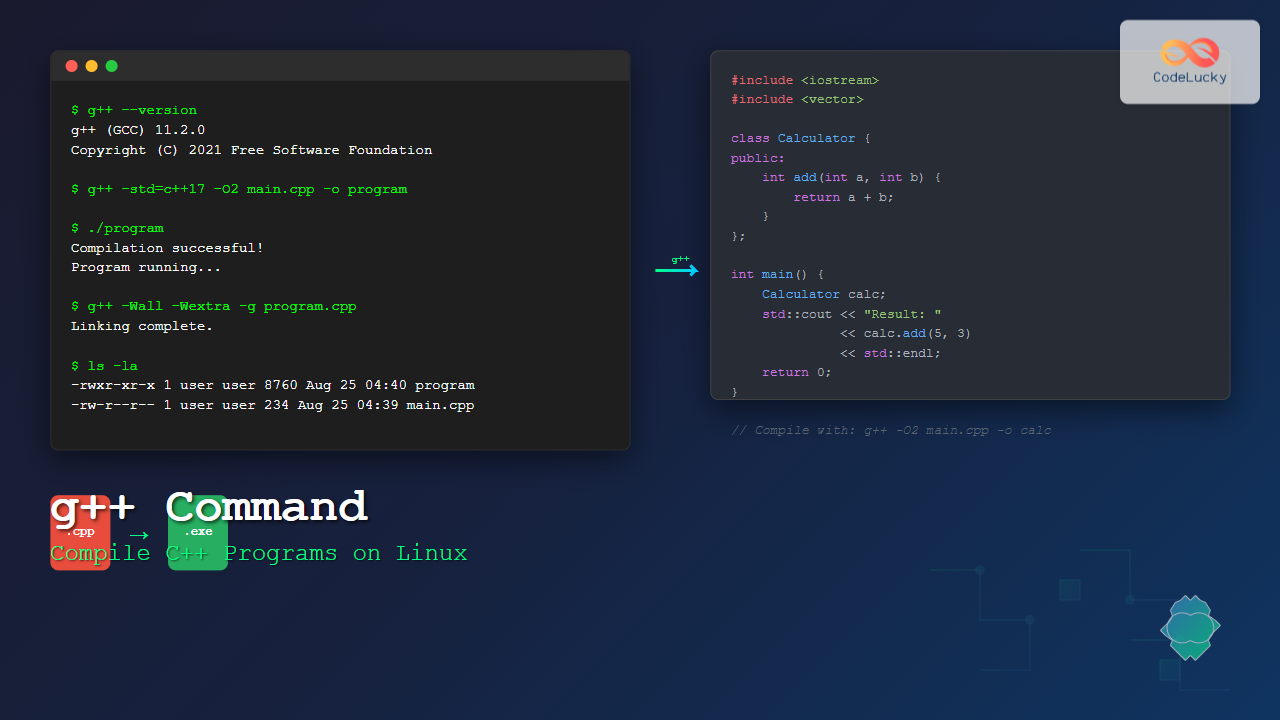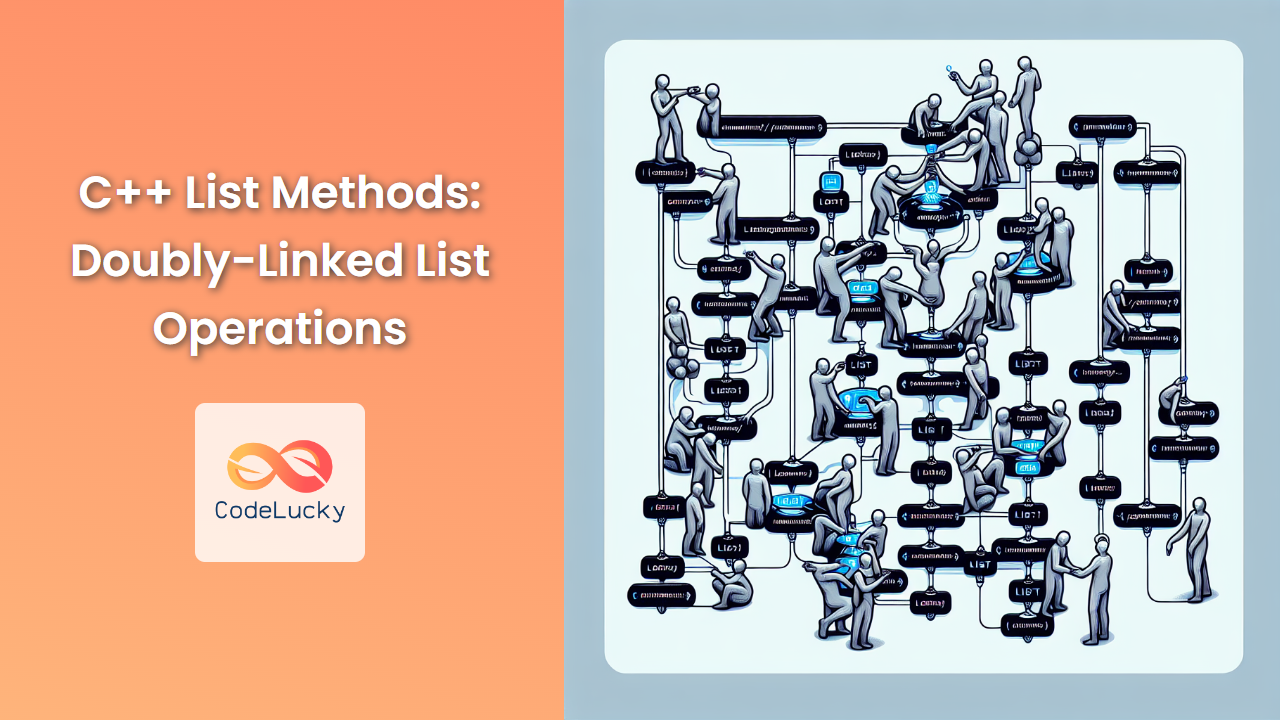Prime numbers have fascinated mathematicians for centuries and play a crucial role in various fields, including cryptography and computer science. In this comprehensive guide, we'll explore different methods to check whether a number is prime using C++. We'll dive deep into the implementation details, discuss the efficiency of each approach, and provide you with practical examples to enhance your understanding.
What is a Prime Number?
Before we delve into the C++ implementations, let's refresh our understanding of prime numbers:
🔢 A prime number is a natural number greater than 1 that is only divisible by 1 and itself.
For example, 2, 3, 5, 7, 11, and 13 are prime numbers, while 4, 6, 8, 9, and 10 are not.
Method 1: Naive Approach
Let's start with the most straightforward method to check if a number is prime. This approach involves checking if the number is divisible by any integer from 2 to n-1.
#include <iostream>
using namespace std;
bool isPrime(int n) {
if (n <= 1) return false;
for (int i = 2; i < n; i++) {
if (n % i == 0) return false;
}
return true;
}
int main() {
int number;
cout << "Enter a number: ";
cin >> number;
if (isPrime(number))
cout << number << " is prime." << endl;
else
cout << number << " is not prime." << endl;
return 0;
}
This method works as follows:
- We first check if the number is less than or equal to 1, which are not prime by definition.
- We then iterate from 2 to n-1, checking if the number is divisible by any of these values.
- If we find a divisor, we immediately return
falseas the number is not prime. - If we complete the loop without finding any divisors, we return
trueas the number is prime.
Let's test this function with a few inputs:
| Input | Output |
|---|---|
| 7 | 7 is prime. |
| 12 | 12 is not prime. |
| 23 | 23 is prime. |
| 1 | 1 is not prime. |
While this method is simple to understand and implement, it's not efficient for large numbers. The time complexity is O(n), which means the execution time increases linearly with the input size.
Method 2: Optimized Trial Division
We can optimize the naive approach by realizing that we only need to check divisibility up to the square root of the number. This is because if a number n is not prime, it must have a factor less than or equal to √n.
#include <iostream>
#include <cmath>
using namespace std;
bool isPrime(int n) {
if (n <= 1) return false;
for (int i = 2; i <= sqrt(n); i++) {
if (n % i == 0) return false;
}
return true;
}
int main() {
int number;
cout << "Enter a number: ";
cin >> number;
if (isPrime(number))
cout << number << " is prime." << endl;
else
cout << number << " is not prime." << endl;
return 0;
}
This optimized version reduces the time complexity to O(√n), which is a significant improvement over the naive approach, especially for larger numbers.
Let's test this optimized function with some larger numbers:
| Input | Output |
|---|---|
| 997 | 997 is prime. |
| 1000 | 1000 is not prime. |
| 10007 | 10007 is prime. |
| 10000 | 10000 is not prime. |
Method 3: Sieve of Eratosthenes
For checking multiple numbers or finding all primes up to a certain limit, the Sieve of Eratosthenes is an efficient algorithm. While it's not typically used for checking a single number, it's worth understanding for its historical significance and efficiency in generating prime numbers.
#include <iostream>
#include <vector>
using namespace std;
vector<bool> sieveOfEratosthenes(int n) {
vector<bool> isPrime(n+1, true);
isPrime[0] = isPrime[1] = false;
for (int i = 2; i * i <= n; i++) {
if (isPrime[i]) {
for (int j = i * i; j <= n; j += i) {
isPrime[j] = false;
}
}
}
return isPrime;
}
int main() {
int limit;
cout << "Enter the upper limit: ";
cin >> limit;
vector<bool> primes = sieveOfEratosthenes(limit);
cout << "Prime numbers up to " << limit << " are:" << endl;
for (int i = 2; i <= limit; i++) {
if (primes[i]) {
cout << i << " ";
}
}
cout << endl;
return 0;
}
This algorithm works as follows:
- We create a boolean array
isPrimeinitialized totruefor all numbers up to n. - We mark 0 and 1 as not prime.
- Starting from 2, we iterate through the array. For each prime number we find, we mark all its multiples as not prime.
- The remaining
truevalues in the array represent prime numbers.
Let's test this method for finding primes up to 50:
| Input | Output |
|---|---|
| 50 | Prime numbers up to 50 are: |
| 2 3 5 7 11 13 17 19 23 29 31 37 41 43 47 |
The time complexity of the Sieve of Eratosthenes is O(n log log n), making it very efficient for generating all primes up to a given limit.
Method 4: Miller-Rabin Primality Test
For very large numbers, probabilistic primality tests like the Miller-Rabin test are often used. These tests are extremely fast and can determine with a high degree of certainty whether a number is prime or composite.
Here's a simplified implementation of the Miller-Rabin test:
#include <iostream>
#include <cstdlib>
#include <ctime>
using namespace std;
long long modularExponentiation(long long base, long long exponent, long long modulus) {
long long result = 1;
base %= modulus;
while (exponent > 0) {
if (exponent & 1)
result = (result * base) % modulus;
base = (base * base) % modulus;
exponent >>= 1;
}
return result;
}
bool millerRabinTest(long long n, int k) {
if (n <= 1 || n == 4) return false;
if (n <= 3) return true;
long long d = n - 1;
int s = 0;
while (d % 2 == 0) {
d /= 2;
s++;
}
srand(time(NULL));
for (int i = 0; i < k; i++) {
long long a = 2 + rand() % (n - 4);
long long x = modularExponentiation(a, d, n);
if (x == 1 || x == n - 1)
continue;
bool composite = true;
for (int r = 1; r < s; r++) {
x = (x * x) % n;
if (x == n - 1) {
composite = false;
break;
}
}
if (composite)
return false;
}
return true;
}
int main() {
long long number;
int k = 5; // Number of iterations for Miller-Rabin test
cout << "Enter a number: ";
cin >> number;
if (millerRabinTest(number, k))
cout << number << " is probably prime." << endl;
else
cout << number << " is composite." << endl;
return 0;
}
This implementation of the Miller-Rabin test works as follows:
- We first handle small numbers and edge cases.
- We decompose n-1 as 2^s * d, where d is odd.
- We perform k iterations of the test, each time choosing a random base a.
- For each base, we compute x = a^d mod n and check certain conditions.
- If all iterations pass, we declare the number as probably prime.
The Miller-Rabin test is probabilistic, meaning it can sometimes incorrectly identify a composite number as prime (although this is extremely rare with multiple iterations). However, it never incorrectly identifies a prime number as composite.
Let's test this method with some large numbers:
| Input | Output |
|---|---|
| 1000000007 | 1000000007 is probably prime. |
| 1000000008 | 1000000008 is composite. |
| 2147483647 | 2147483647 is probably prime. |
The time complexity of the Miller-Rabin test is O(k log^3 n), where k is the number of iterations. This makes it extremely efficient for testing the primality of very large numbers.
Conclusion
In this comprehensive guide, we've explored various methods to check for prime numbers in C++, ranging from simple trial division to advanced probabilistic tests. Each method has its strengths and is suitable for different scenarios:
- The naive approach is simple but inefficient for large numbers.
- The optimized trial division method is a good balance of simplicity and efficiency for moderate-sized numbers.
- The Sieve of Eratosthenes is excellent for generating all primes up to a given limit.
- The Miller-Rabin test is the go-to method for very large numbers where absolute certainty is not required.
By understanding these different approaches, you can choose the most appropriate method for your specific use case, whether you're working on a simple programming exercise or developing a cryptographic system.
Remember, prime numbers continue to be an active area of research in mathematics and computer science. As you delve deeper into this fascinating topic, you'll discover even more advanced algorithms and applications of prime numbers in various fields.
Happy coding, and may the primes be with you! 🚀🔢

